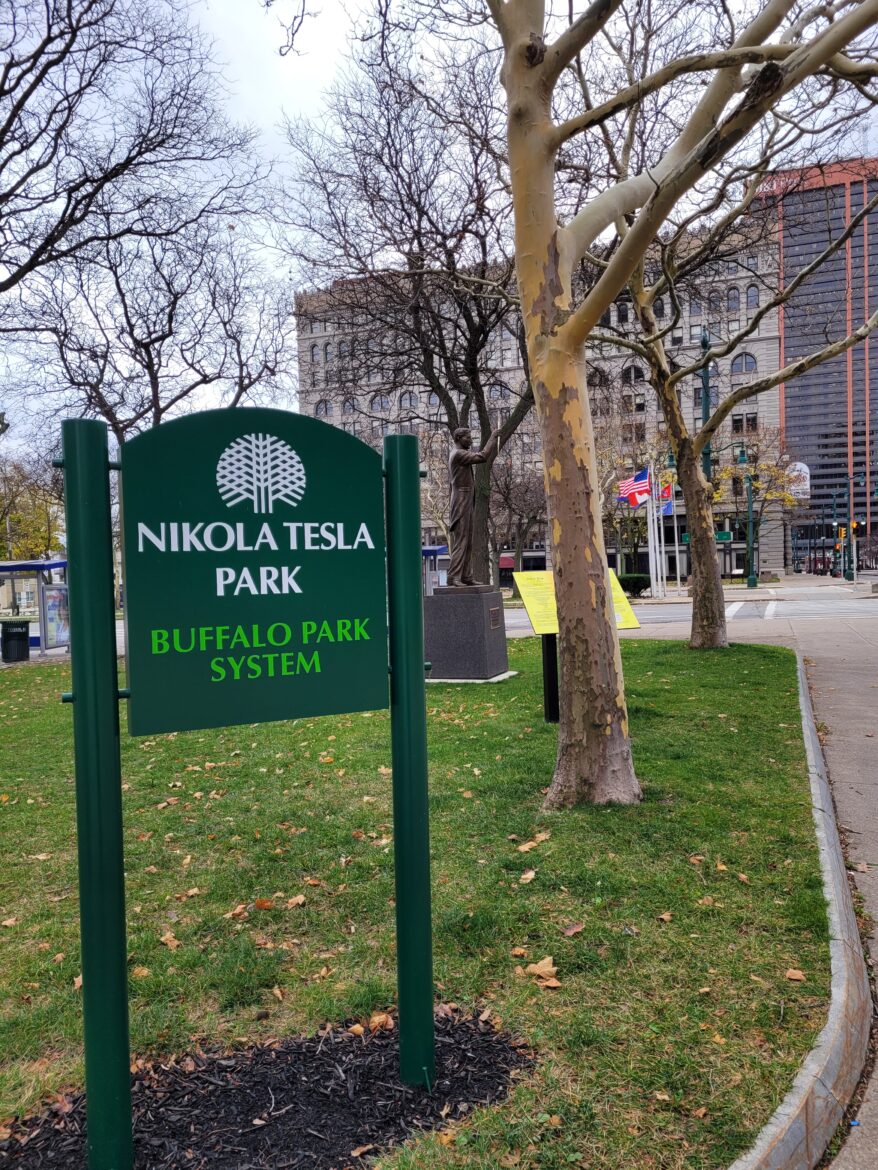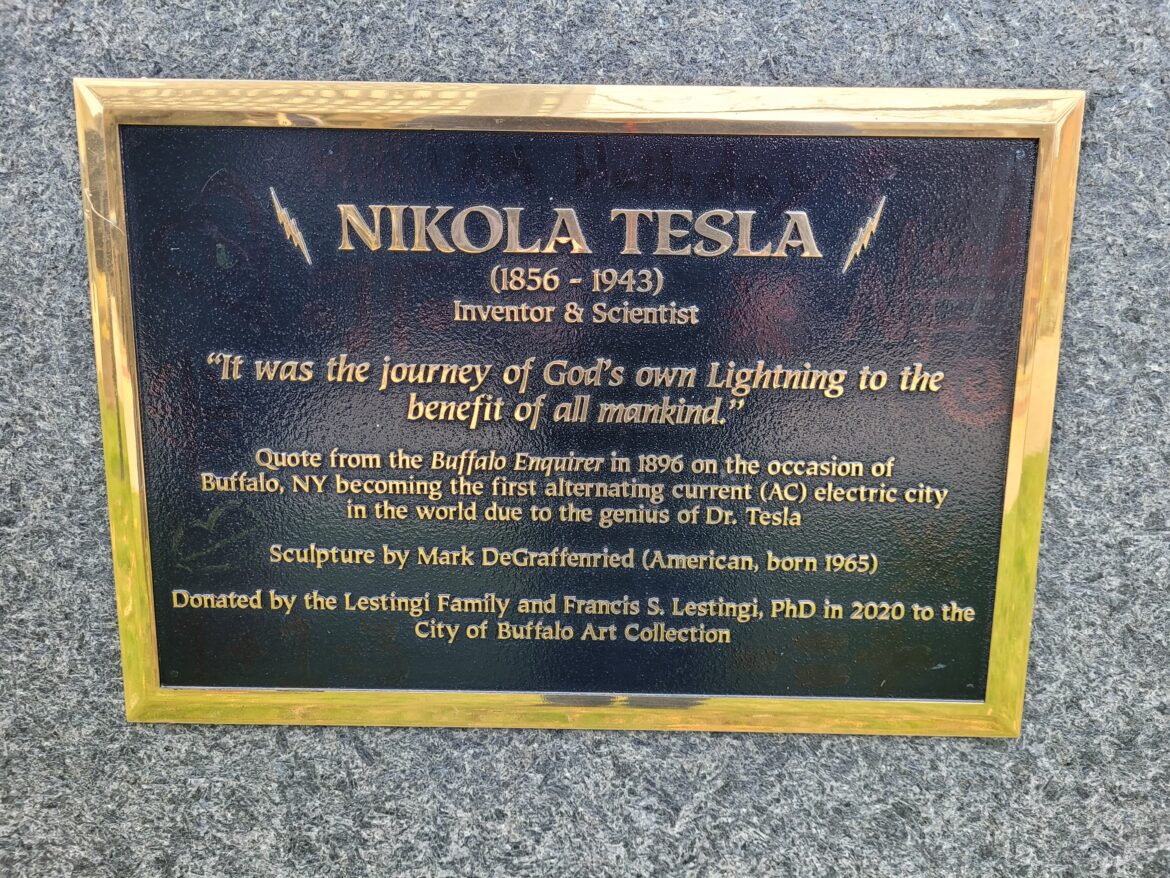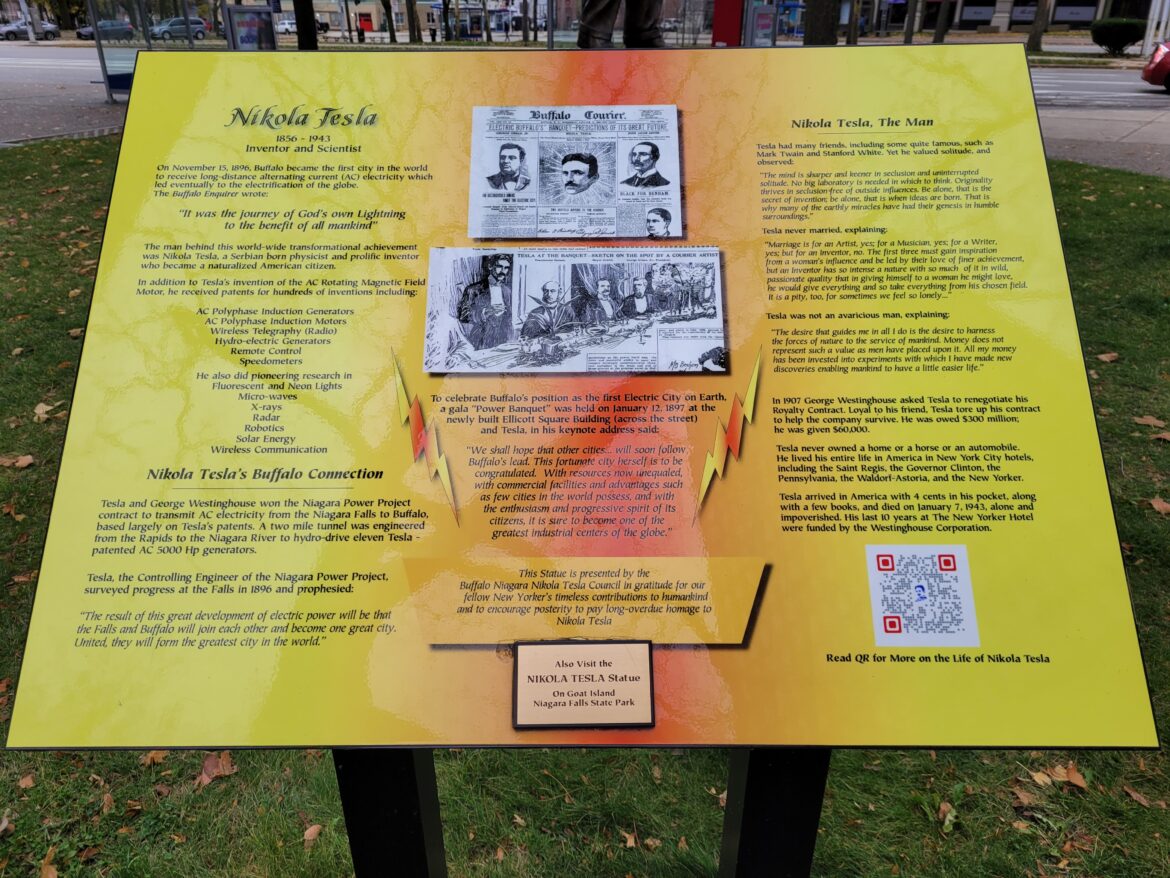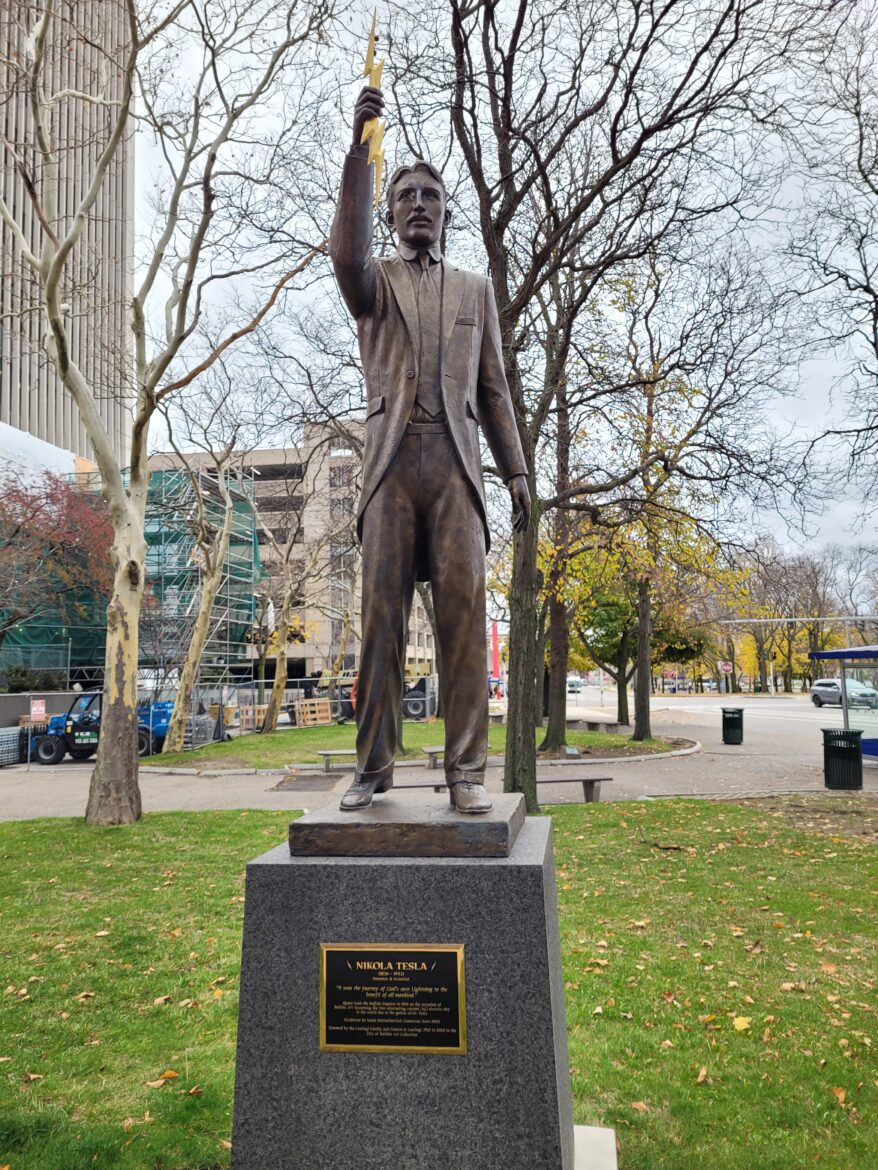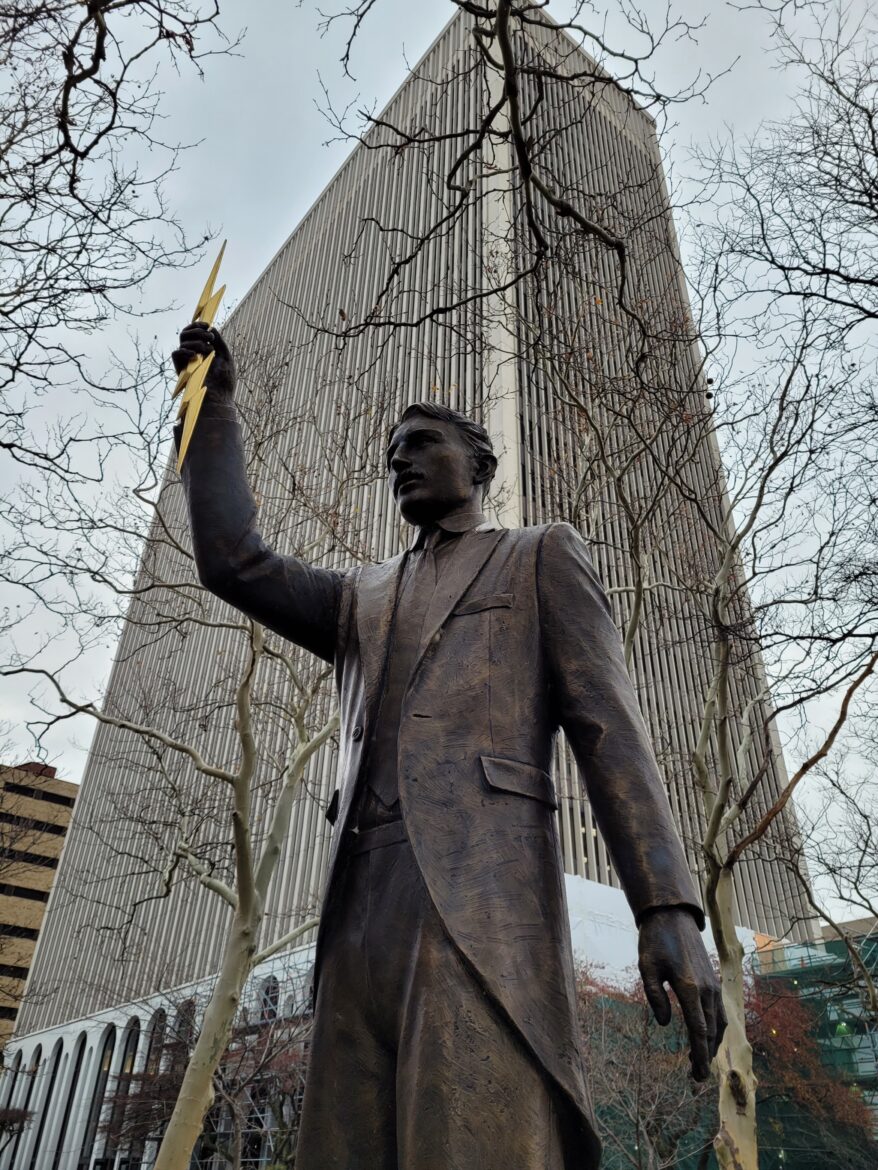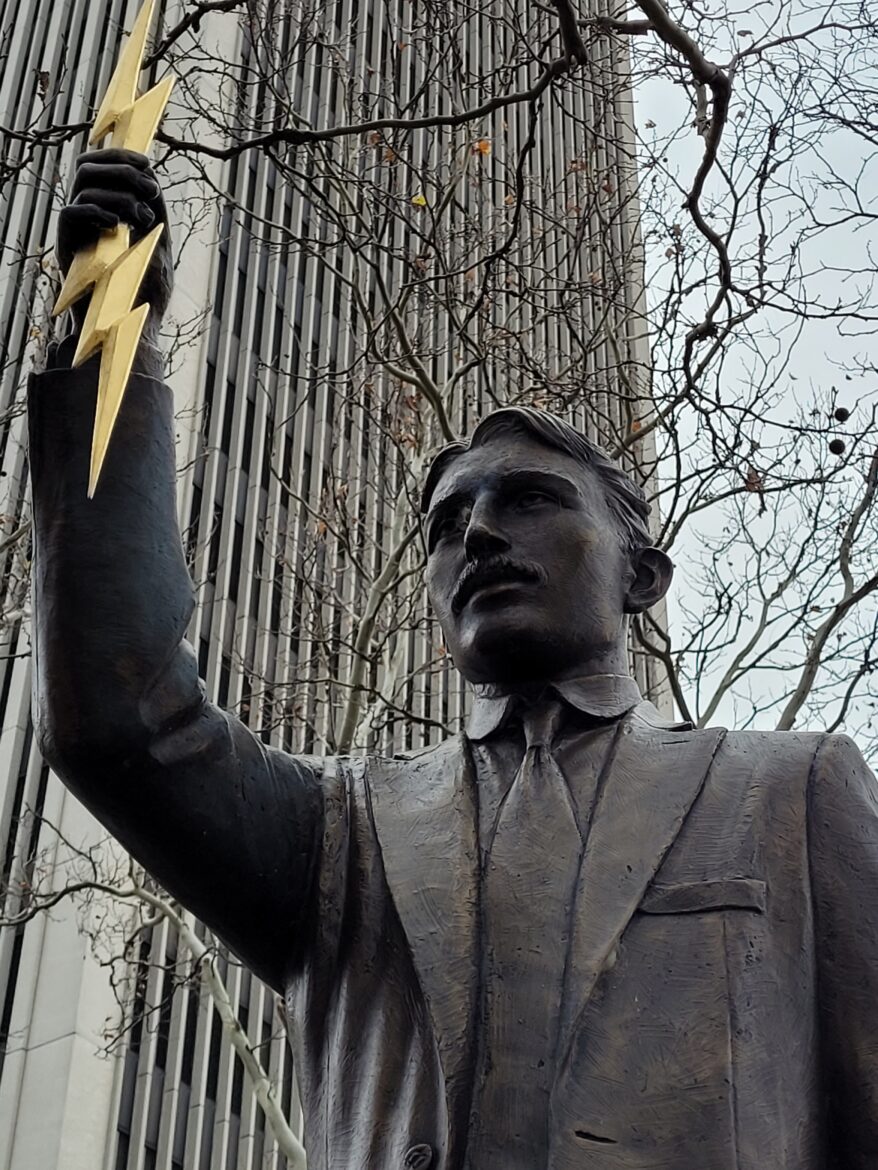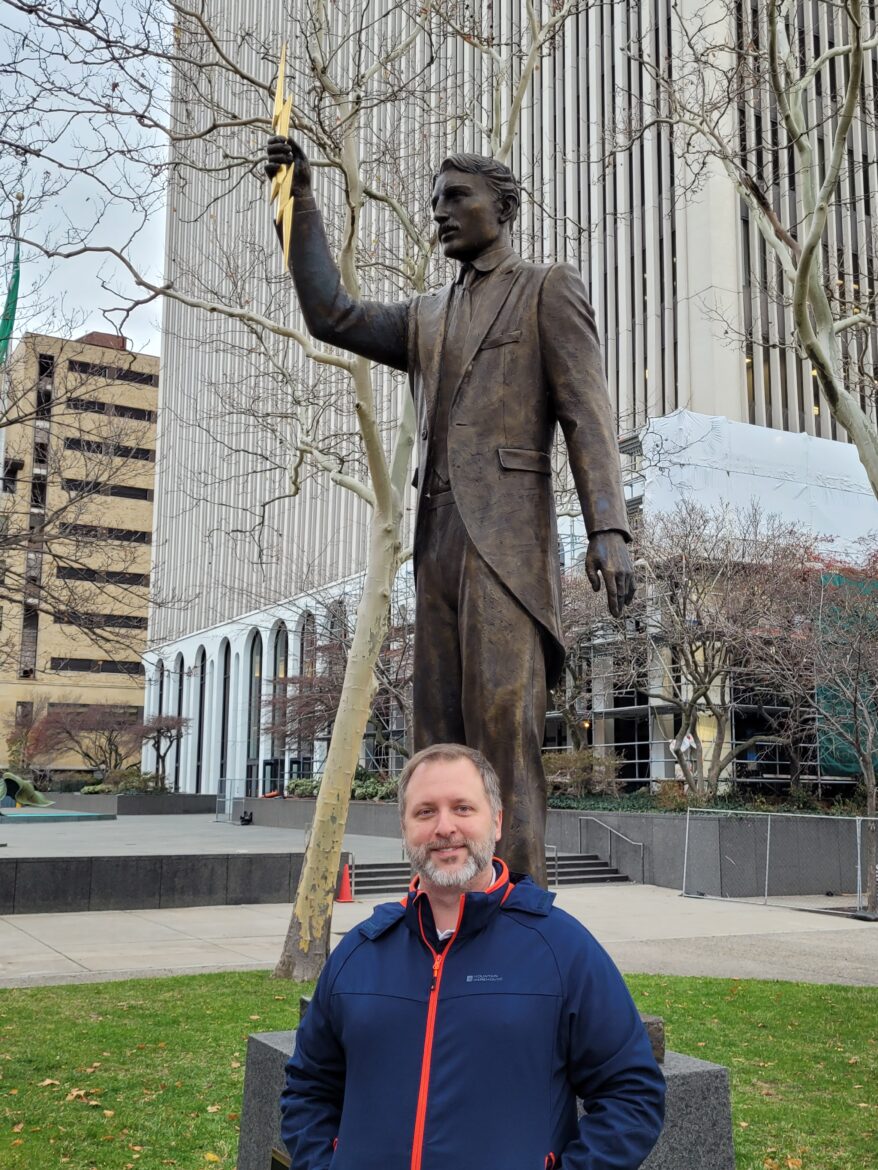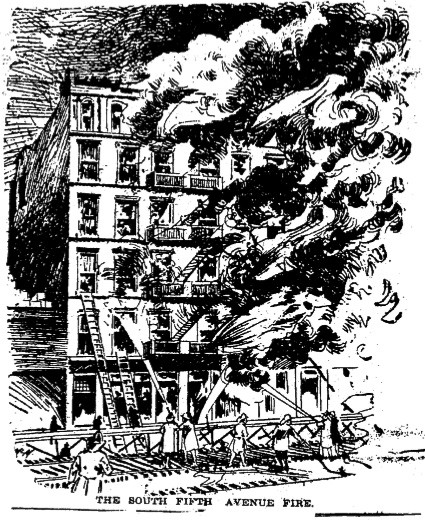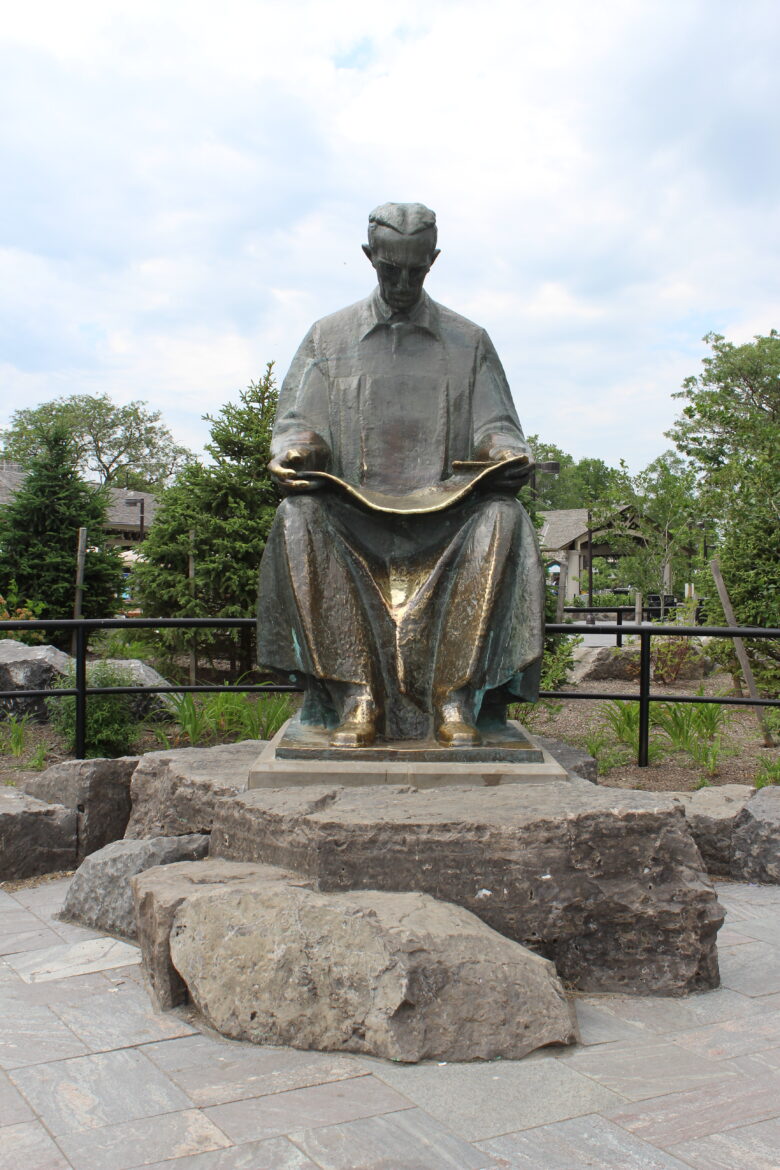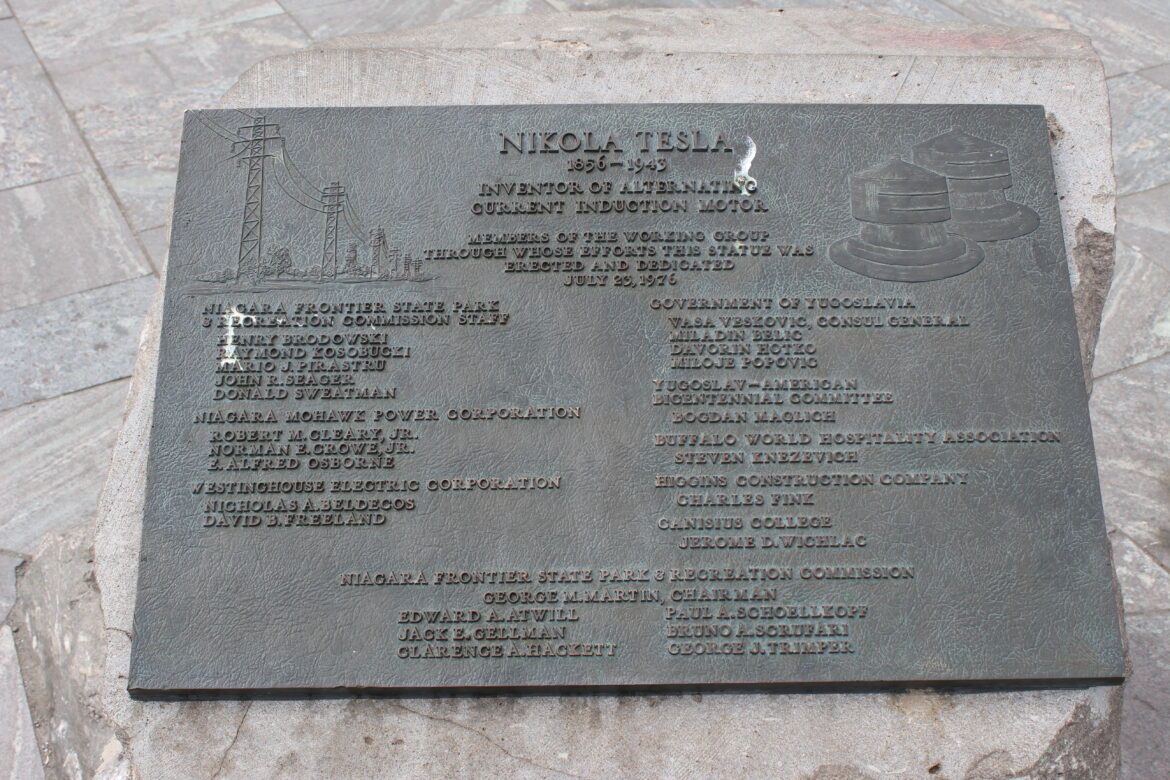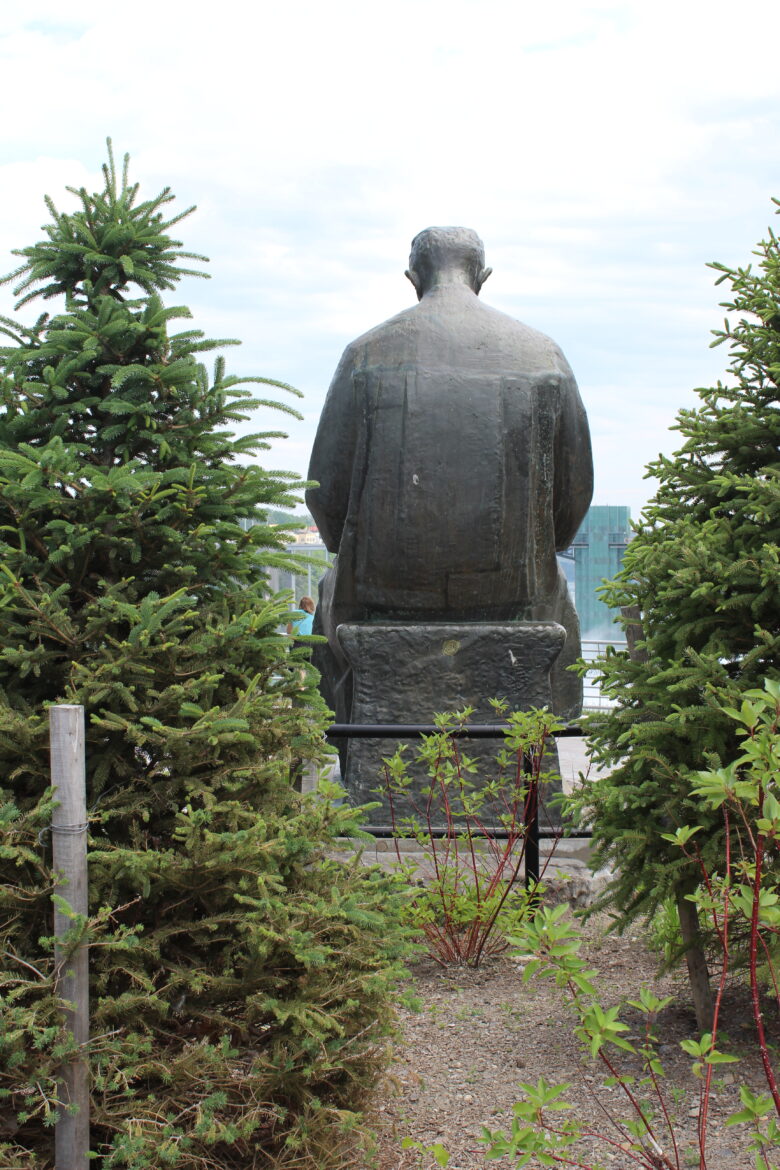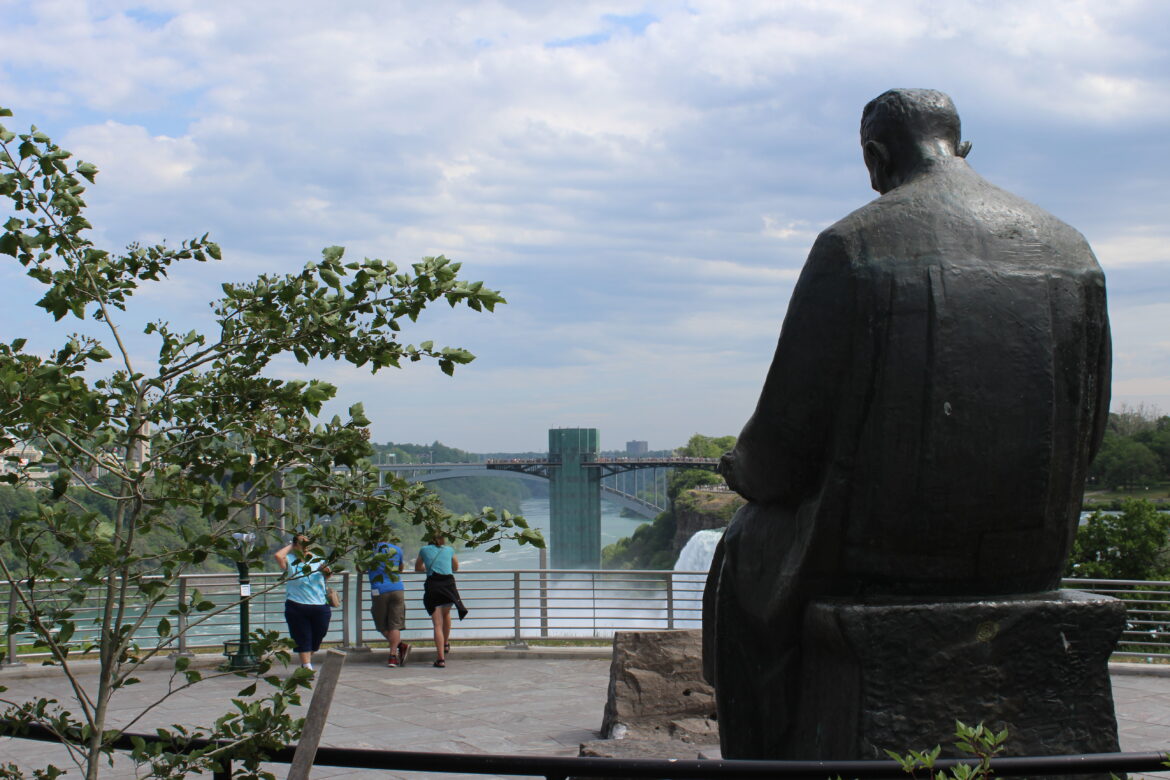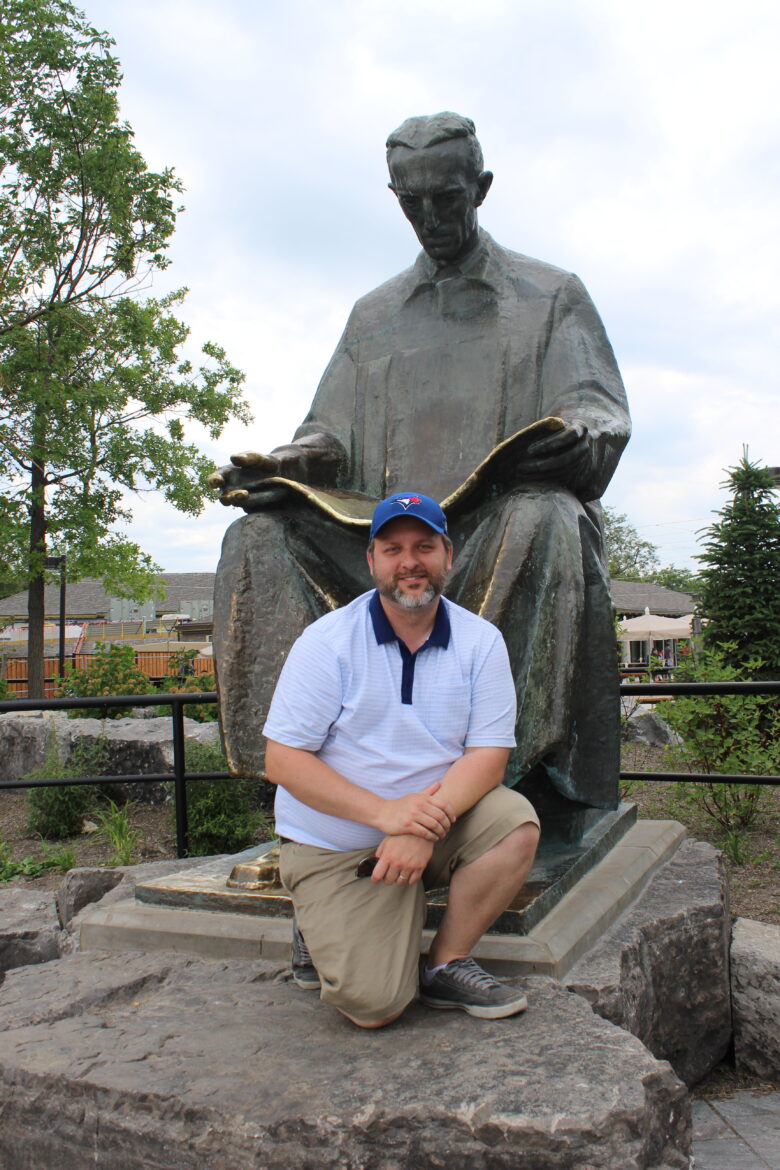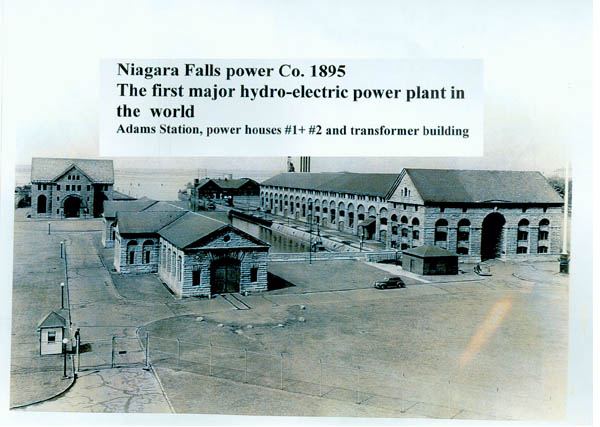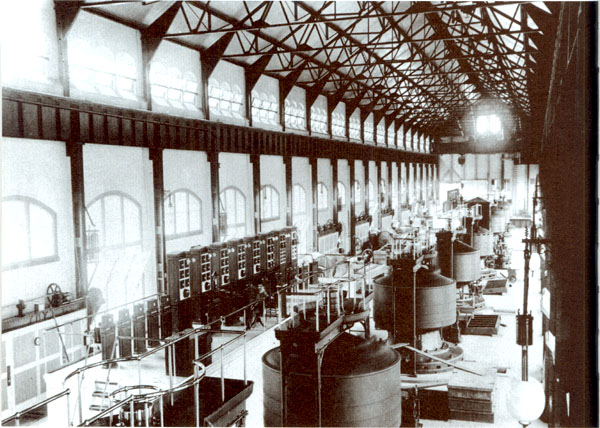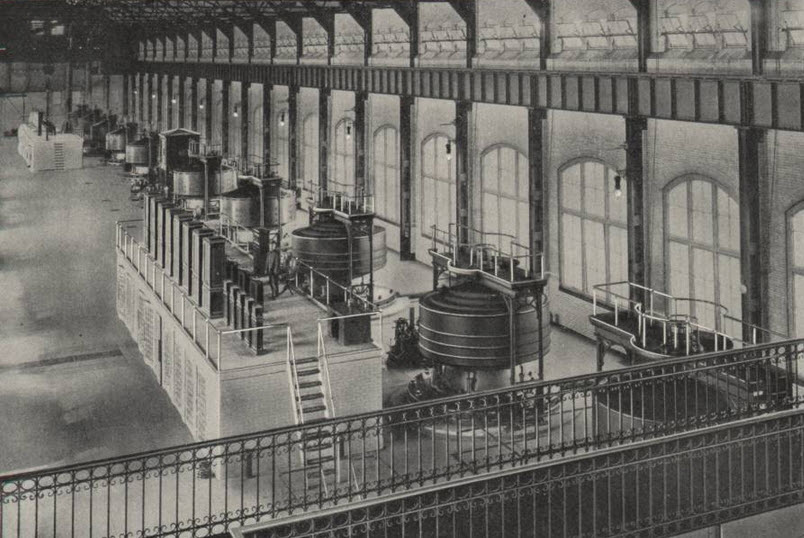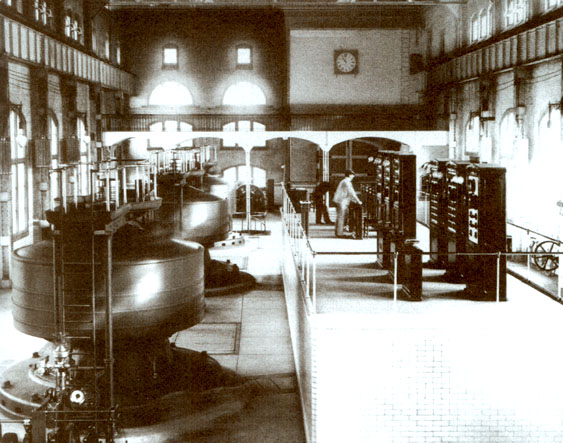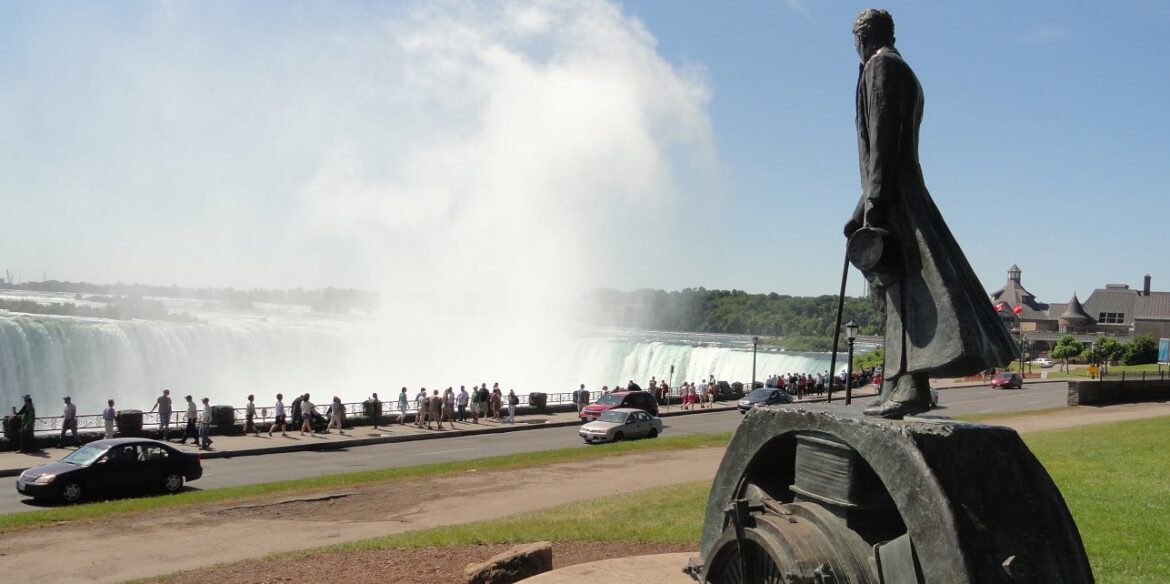Tesla takes a momentous professional leap and heads west to Colorado Springs. There he builds the experimental station that would allow him to understand the fundamental principles needed to build his world wireless system.
My Kickstarter!
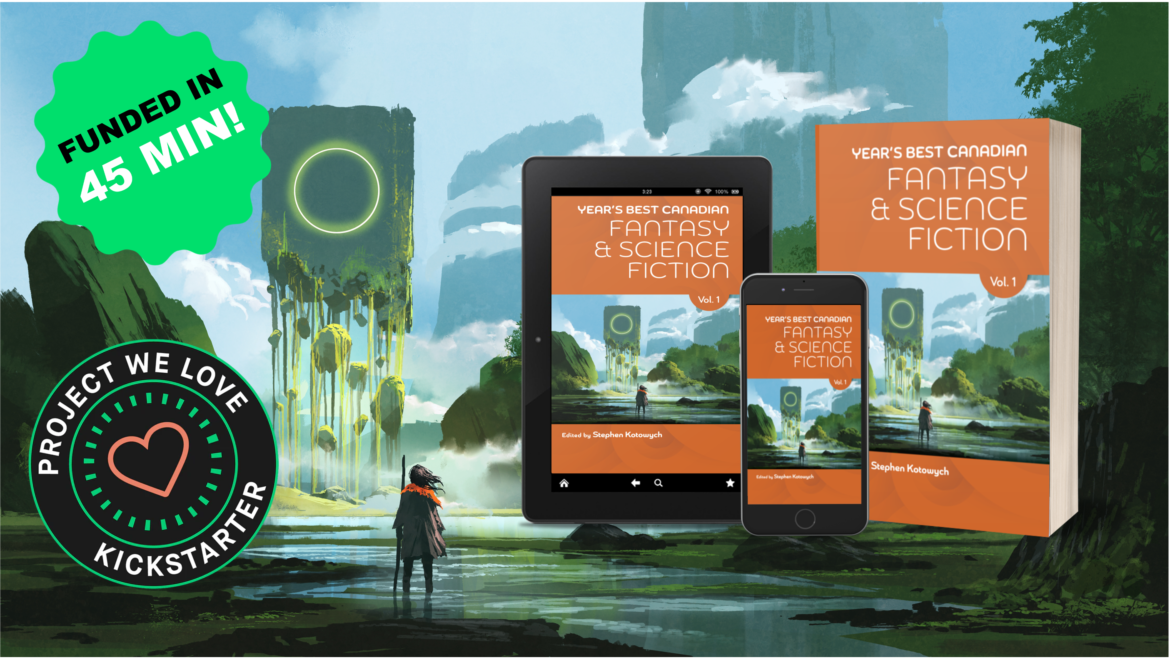
Award winners. Award nominees. Hidden gems. All Canadian. All in one anthology. The best short fantasy and science fiction of the year.
ARTICLES
Never-before-seen ‘crystal-like matter’ hidden in a chunk of fossilized lightning is probably a brand new mineral – LiveScience
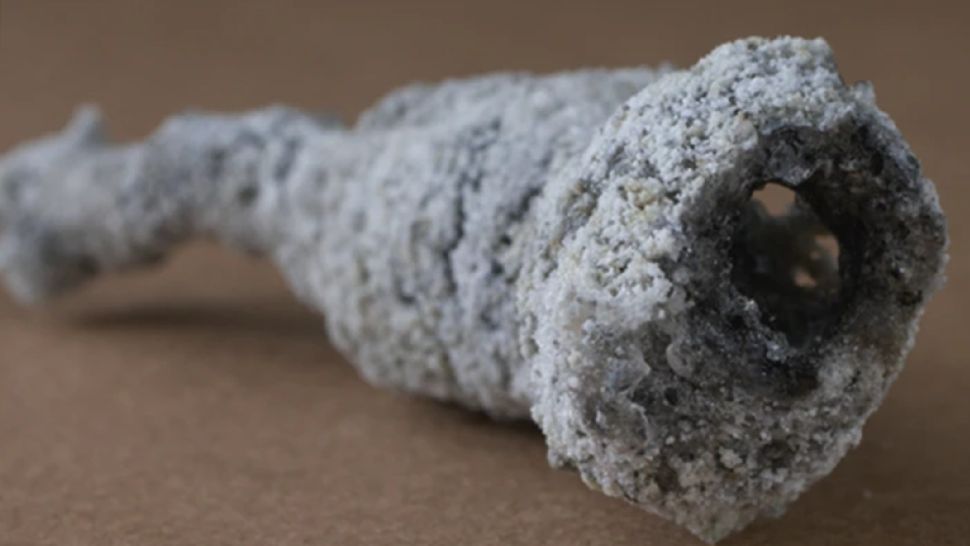
=-=-=-=-=-=-=-=
US firm unveils game-changing small nuclear reactor that can power 300,000 homes – Interesting Engineering
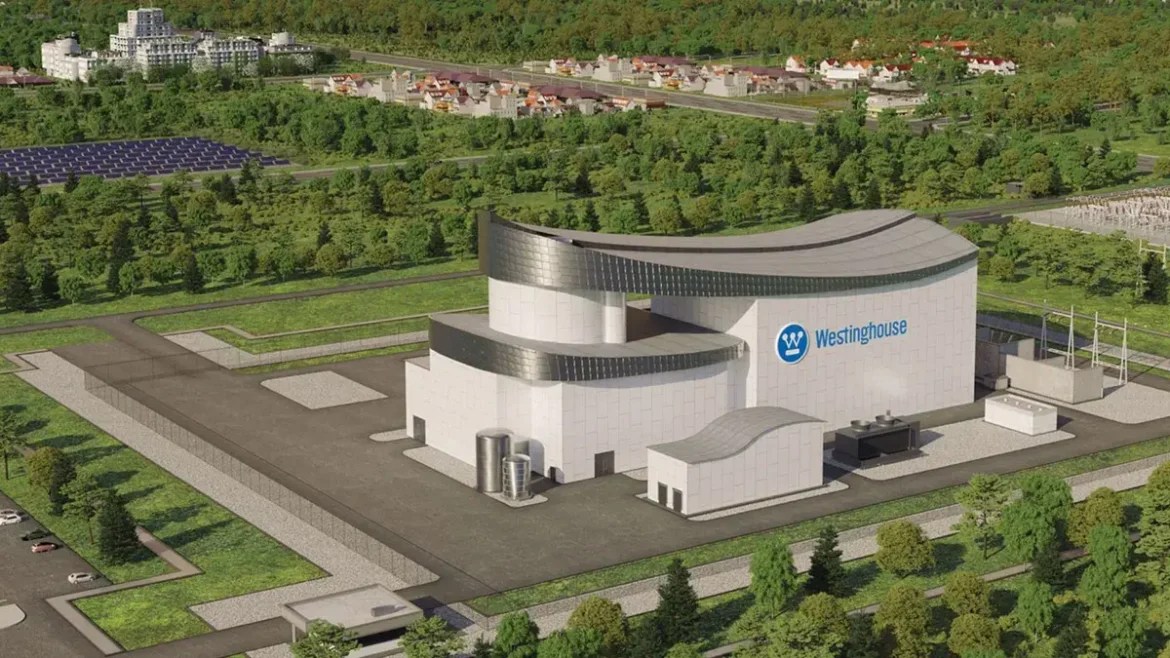
=-=-=-=-=-=-=-=
TESLA vs EDISON: THE PUPPET SHOW
See Sparks Fly Between Two of History’s Most Impassioned Inventors in Tesla vs Edison (press release)
‘Tesla vs Edison’ electrifies history with whimsy, humor, puppets (review from The Emory Wheel)
SHOW NOTES – EPISODE 032
In August 1898, John Jacob Astor returned from his self-funded adventures in the Spanish-American War.
The heir to a $100 million fortune (that’s north of $3 billion in today’s money), Colonel Astor (as he insisted that everyone call him after the war) was the great-grandson of John Jacob Astor, who had become rich first in the fur trade and then in New York City real estate.
As one of the wealthiest families in America, the Astors ruled New York high society. I’ve mentioned “the 400” previously–the creme de la creme of New York’s social elite. Why were there 400? Because that’s how many guests could fit into the ballroom in the New York home of Mrs. Astor, the colonel’s mother.
Educated at Harvard, when he graduated Astor followed family tradition and invested in Manhattan real estate. Envious of the success that his cousin, William Waldorf Astor, was having with a new hotel, the Waldorf, Astor built his own luxury hotel next door in 1897–because that’s what insanely wealthy people with huge egos who make people call them “Colonel” do–and he named it the Astoria. The complex soon became known as the Waldorf-Astoria, and at the time, it was the largest hotel in the world.
The Colonel was also widely considered to be cold-hearted, humourless, weak-minded and almost completely devoid of personality.
Is it any wonder then that despite the Colonel’s return in August, Tesla put off going to see him until December 1898?
Tesla spent the intervening months trying his best to raise funds for an expanded, scaled-up version of the system that had already outgrown his New York lab. He demonstrated his system in August 1898 for Prince Albert of Belgium (whom he met previously in Paris), and Tesla secured a loan of $10,000 (about $363,000 today) from a partner in the dry-goods firm of Simpson and Crawford.
But by December, Tesla had set his sights firmly on Astor.
So why did Tesla think Astor was a good potential investor to court (other than the vast fortune, I mean?)
Well, Astor was fascinated by science and technology. Working in a laboratory at the family estate at Ferncliff, Astor tinkered with several inventions, including a bicycle brake, a vibratory disintegrator used to produce gasoline from peat moss, and a pneumatic machine for improving dirt roads. In 1894 he published a science-fiction novel, A Journey in Other Worlds, which described life in the year 2000 and travel to Saturn and Jupiter. In this novel, Astor speculated on new technologies such as a worldwide telephone network, solar power, and even a plan to modify the weather by adjusting the Earth’s axial tilt.
Astor was also familiar with Tesla’s work since he was a director of the Cataract Construction Company, the firm that had built the Niagara power plant. Astor presented Tesla with a copy of his novel in February 1895, and Tesla thanked him for “an interesting and pleasant memento of our acquaintance.”
And if you remember back to Episode 30, Astor was an enthusiastic backer of a fraudulent inventor from Philadelphia named John Ernst Worrell Keely, who claimed to have discovered a “vaporic” or “etheric” force which could provide power to a motor. Remember: it was not for nothing that Astor was considered “weak-minded” by his contemporaries.
It must have been frustrating for Tesla that a fraud like Keely was getting Astor’s backing. Surely, Tesla must have thought, Astor would want to fund him, too, since Tesla at least had a track record of successful invention and innovation.
To get to the Colonel, Tesla went through his wife, Ava. While the Colonel was seen as dour, Eva was considered by many to be the most beautiful woman in America.
Tesla relocated to the Waldorf-Astoria in the fall of 1898, and combined with his regular dining at Delmonico’s in order to be seen by the rich and powerful of New York, it’s possible he was able to arrange to bump into the Colonel and Eva from time to time.
Seifer reports in his book that the three eventually got to dining together occasionally and that Tesla was always careful to bring Eva a bouquet of flowers when they did.
Ava, who was enthralled by the inventor’s experiments, seemed to be on Tesla’s side in getting her husband to fund his endeavours, but when the two men finally met alone in late 1898 Tesla still felt the need to apologize for not joining Astor on his adventures during the Spanish-American War. You’ll recall from last episode that Astor had invited Tesla on his crusade, encouraging him to unleash his teleautomaton torpedoes against the Spanish.
Upon hearing Tesla’s apology, the Colonel told him not to worry.
“During the gunfire,” Astor replied, “I realized that your life was too precious to risk on such a trip. I see, however, from recent reports that you have been attacked after all, but it has been by reporters instead.”
“I’m glad,” Tesla quipped, “that I am living in a place in which, though they can roast me in the papers, they cannot burn me at the stake.”
The ice thus broken, Tesla convened a meeting with Astor and two of his associates, Clarence McKay and Darius Ogden Mills, to showcase his progress with oscillators, fluorescent lights, and various patent applications. Tesla also marshalled articles from technical journals as well as reports from the Royal Society and Roentgen Society, and testimonials from eminent scientists like Sir William Crookes, about the progress Tesla had made with his inventions.
“It is for a reason that I am often and violently attacked [in the press],” Tesla explained to the Colonel. “[M]y inventions threaten a number of established industries. My telautomaton, for instance, opens up a new art which will sooner or later render large guns entirely useless, and will make impossible the building of large battleships, and will, as I have stated in my patent long before the Czar’s manifesto, compel the nations to come to an understanding for the maintenance of peace.”
Astor, while intrigued, was more skeptical.
“You are taking too many leaps for me,” Astor said, causing his associates to also hit pause on their potential support. “Let’s stick to oscillators and cold lights. Let me see some success in the marketplace with these two enterprises before you go off saving the world with an invention of a different order, and then I will commit more than my good wishes.”
Tesla waited until the new year and then made a more direct pitch to Astor.
Emphasizing his past successes–that he had “brought to commercial perfection some important inventions which, even at the most conservative estimate, must be valued at several million dollars”–Tesla said that in the past, Westinghouse had paid him $500,000 for the AC polyphase system and that Edward Dean Adams had invested $100,000 to become a partner in his company, and that “I am fully confident that the property which I have now in my hands will pay much better than this.”
Tesla’s new system, he said, had reduced the need for expensive copper components to almost nothing. He could run 1000 of his new lamps on the same amount of wire needed for just a single incandescent lamp, and generate 5000 times as much light in the process.
Plus, there were Tesla’s innovations in oscillators, wireless power transmission, wireless telegraphy and remote control, plus side products generated by his devices, such as fertilizers and nitric acid condensed from the air, the production of ozone, cheap refrigeration and cheap manufacture of liquid air.
Given these facts, Tesla concluded, it was only a matter of time before G.E. or Westinghouse or some enterprising individual paid Tesla a handsome sum for the rights to such innovations. And wouldn’t Colonel Astor prefer that those rights–and the fortune that they would generate–belonged to him and not to someone else? And so, really, Tesla’s asking price of $1000 per share (roughly $36,000 today) for an interest in his company was kind of a bargain, if you think about it.
Astor had one condition for his support–that Tesla’s priority was to exploit his innovations in fluorescent lighting (to which Tesla quickly agreed)–and then on January 10, 1899, Astor signed papers purchasing 500 shares of the Tesla Electric Company in exchange for $100,000 and a seat on the company’s board.
Advancing $30,000 to Tesla, Astor prompted headed to Europe for an extended holiday.
Tesla immediately set to work refining his fluorescent lighting system…
Haha–no, I’m kidding.
Astor was out of the country, so naturally, Tesla ignore his benefactor’s wishes and instead turned back to his pursuit of wireless power.
After such an effort to wrangle investment out of Colonel Astor, why did Tesla ignore the deal he’d made? Was Tesla just a jerk?
No.
Well, not entirely.
There’s little doubt that Tesla felt he knew better than some mere moneyman where the real potential for innovation was, so an Astor or not, Tesla wasn’t going to let the Colonel boss him around. But pride and ego weren’t the whole reason Tesla turned immediately back to wireless.
That had to do in large part with a young Italian we’ve mentioned before, Guglielmo Marconi. Tesla had been following developments with Marconi’s wireless system and was growing concerned.
From the start, Marconi sought to develop a system that could send telegraph messages wirelessly, and he focused on increasing the distance over which he could send them. In order to finance and promote his system, Marconi travelled to England in 1896 to take advantage of the business connections via his mother’s family, the Jamesons, of Jamesons Irish Whiskey fame. So, you know, Marconi wasn’t all bad.
Marconi steadily improved his apparatus, and by the fall of 1898 he could send messages over distances of eighty to one hundred miles. Unlike Tesla, who demonstrated his apparatus privately to friends, potential investors, and an occasional reporter, Marconi offered regular public demonstrations of his system.
Such public demonstrations got the press in both England and America on Marconi’s side, as soon reporters were touting Marconi’s wireless telegraph as a breakthrough.
This positive coverage of Marconi annoyed Tesla since, from his perspective, Marconi had done nothing new. As far back as 1890, Tesla had been experimenting with wireless apparatus, and in an 1893 lecture, he had outlined how one could send messages over a distance.
Careful to avoid using Marconi’s name, Tesla complained in the Electrical Review in January 1899 that “One can not help admiring the confidence and self-possession of experimenters, who put forth carelessly such views and who, with but a few days’, not say hours’, experience with a device, venture before scientific societies, apparently unmindful of the responsibility of such a step, and advance their imperfect results and opinions hastily formed. The sparks may be long and brilliant, the display interesting to witness, and the audience may be delighted, but one must doubt the value of such demonstrations.”
The irony here, of course, is that you could easily put those same words in the mouths of Tesla’s critics, who felt the same way about the flashiness of his demonstrations but found actual achievement or application wanting in the inventor’s work.
That Tesla’s comments were a thinly veiled attack on Marconi was lost on no one. Soon, New York gossip rag Town Topics poked fun at Tesla, taking the view that while Tesla was making promises, Marconi was getting results:
Tesla, America’s Own and Only Non-Inventing Inventor, the Scientist of the Delmonico Caf and Waldorf-Astoria Palm Garden, has been at it again. This time the news of young Marconi’s success in telegraphing through space fired Tesla to feats hitherto undreamed of, and he filled columns in the Herald–which paper, I much fear me, inclines to help Tesla make a guy of himself–with profound droolings about volts and resistances and circuits and amperes and things and things. Tesla says he can do everything that Marconi has done. Of course, he doesn’t really do them but that may be because he is afraid someone else may find out how they are done. He knows all about the theory and the practical machinery of Marconi’s messages through miles of space and could prove it too–if old Bill Jones were alive. Indeed the actual results of the methods of the two inventors show only this slight difference: Marconi telegraphs through space and Tesla talks through space.
In March 1899, Marconi successfully sent a message from France across the Channel to a receiver at the South Foreland Light-house in England.
Not to be outdone, Tesla announced that he was prepared to send messages instantaneously around the world. As he boasted in the New York Journal:
The people of New York can have their private wireless communication with friends and acquaintances in various parts of the world.
It will be no great wonder to have a cable tower [with a balloon tethered to it] than it is now to have a telephone in your house.
You will be able to send a 2,000 word dispatch from New York to London, Paris, Vienna, Constantinople, Bombay, Singapore, Tokio [sic] or Manila in less time than it takes now to ring up central.
By the spring of 1899, Tesla had all the elements he needed for his ideal wireless power system: he had perfected the circuitry needed to create a powerful high-voltage, high-frequency transmitter, he had discovered how to tune his transmitter and receivers by adjusting the capacitance and inductance, and he had become convinced that the atmosphere could serve as the return circuit for his system.
But there remained research to be done.
First, he had to figure out the laws of propagation of currents through the earth and the atmosphere to ensure that his system could send power or messages from one point to another. Next, Tesla needed to build coils and capacitors capable of working at millions of volts to power a global system. And finally, knowing that he would need to deliver power or messages to specific users, Tesla sought to improve his methods of tuning, or as he put it, “to perfect means for individualizing and isolating the energy transmitted.”
Having now promised worldwide wireless telegraphy in the press, Tesla knew that he had to deliver results. It was time, as the saying goes, to put up or shut up.
So that’s why he took Astor’s money to build the plant he needed to work out the operating details of his wireless system.
His laboratory, and indeed all of Manhattan, provided too confining for such endeavours. And so Tesla took to heart Horace Greeley’s famous advice to “Go West, young man,” and in May 1899, he relocated to Colorado Springs, where he would live and work until January 1900.
But, before he left, there was one last middle finger to extend to his one-time bestie and hype man, TC Martin.
After shipping his equipment to Colorado in the early spring of 1899, Tesla arranged an interview profiling him and his lab with the editor of the Electrical Review magazine, Charles W. Price, the chief rival of Martin and his publication, Electrical World. The interview was accompanied by sensational photographs by Dickenson Alley.
Complete with a glowing description (no pun intended) of Tesla and his experiments, the article ran in the March 29, 1899 issue. Starting with a full-length portrait of the inventor grasping an illuminated basketball-sized wireless vacuum lamp, the essay described the evolution of Tesla’s high-tension transformer, which resulted in Tesla’s flat, spiral transmitting coil.
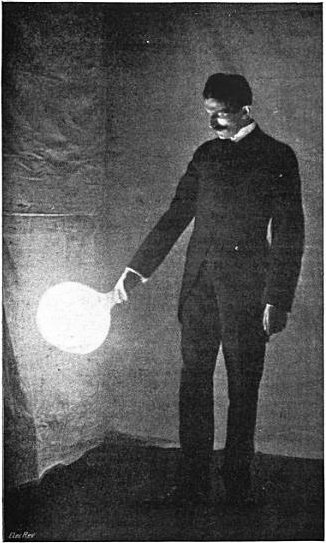
This eight-foot transmitter, which looks like a sun wheel or spider’s web, allowed Tesla for the first time to generate two individualized vibrations, or tuned circuits, simultaneously and also produce many millions of volts.
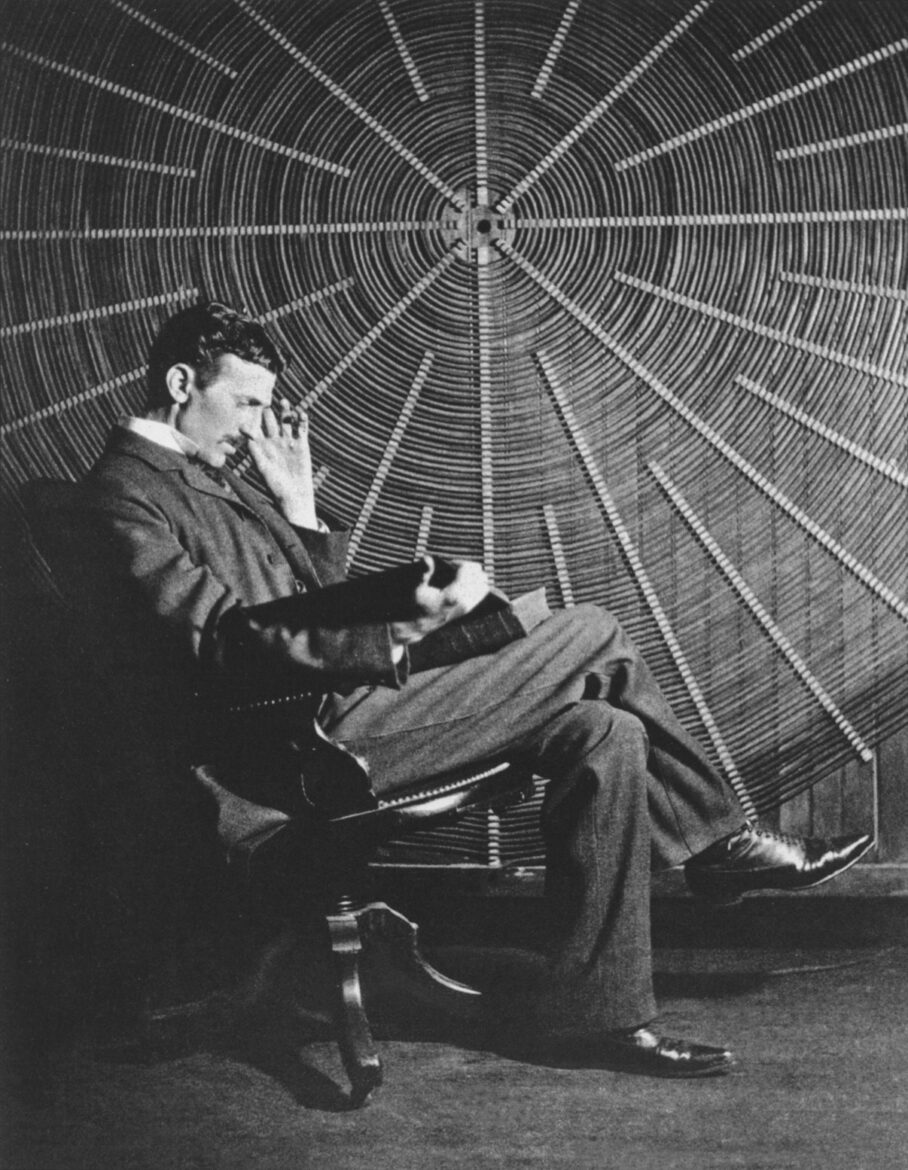
Other prints depicted the flamboyant engineer transmitting high currents through his body to illuminate a variety of vacuum tubes, such as one that he whipped around his head in a multiple exposure. With one hand seeming to pluck a refulgent rod out of the midst of a spiral galaxy of blurred light and the other grasping a sparking, circular high-tension coil, the operator’s body[was] charged to a [great] potential
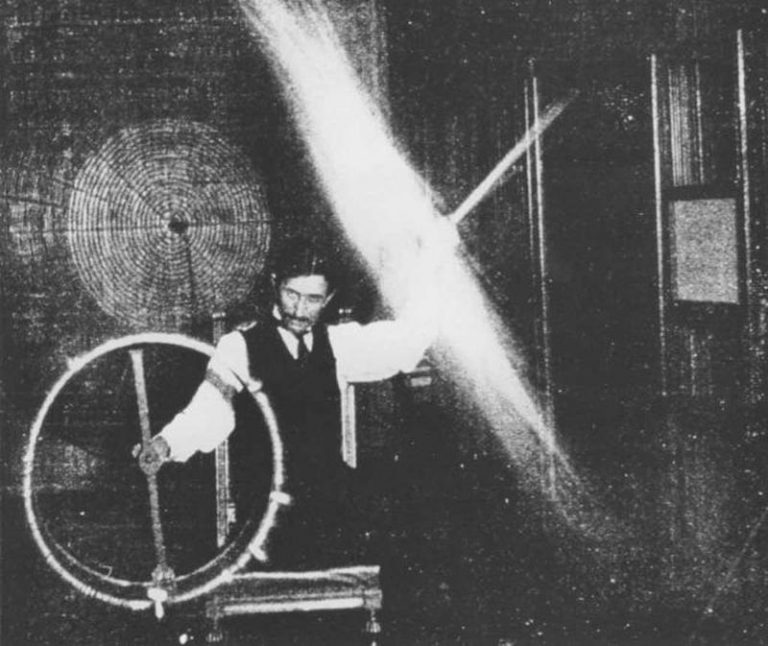
That little bit of petty publicity taken care of, it was finally time to decamp to Colorado.
Okay, so, why Colorado Springs?
Well, even when headed out to the frontier, Tesla–grown accustomed to the finer things in life–couldn’t be without at least some luxuries. Tesla was the original “glamper.”
Colorado Springs was founded in 1871 as a posh mountain resort that–with its scenic natural beauty, high altitude (its 6000 ft above sea level), dry climate, and fluoride-rich waters–attracted a well-to-do clientele seeking relief from a variety of ailments, including tuberculosis. Nearby gold mines also produced a number of millionaires who built fine homes in Colorado Springs.
Yeah, okay, but why Colorado Springs? Bankrolled by Astor, Tesla could have picked anywhere he wanted.
Well, at least one newspaper report suggests Tesla made a brief visit to Colorado Springs in 1896 to conduct a few wireless experiments, so he’d at least been there before.
With the town situated at the foothills of the Rockies, one wonders if Colorado Springs would have reminded Telsa of his childhood home in Smiljan.
The immediate cause for his choice of the town, however, might have been the invitation of Leonard E. Curtis, a partner of Tesla’s patent attorney, who himself had moved to Colorado Springs for his health. He suggested Tesla could make use of Colorado’s wide-open spaces to safely perform experiments he couldn’t contemplate in New York.
Tesla seemed to agree. “My coils [in New York] are producing 4,000,000 volts,” Tesla told Curtis in a letter, “and sparks jumping from walls to ceilings are a fire hazard.”
And an elevation of 6000 ft meant Tesla could begin to grapple with how currents were conducted through both the earth’s crust and the atmosphere at high altitudes.
Plus, Colorado Springs was almost 1800 miles away from the New York press that had begun to turn on Tesla, so there was that to factor in, too.
Intrigued by the invitation, Tesla laid out his needs to Curtis: “This is a secret test,” said Telsa. “I must have electrical power, water, and my own laboratory. I will need a good carpenter who will follow instructions…My work will be done late at night when the power load will be least.”
Curtis arranged everything, including free power from the local electrical utility, the El Paso Power Company.
On his way to Colorado Springs, Tesla stopped in Chicago to lecture before the Commercial Club–home of the city’s business elite. While the high point of the lecture was a demonstration of his radio-controlled boat, Tesla also outlined his plans to broadcast power, signal Mars, and use electricity to convert atmospheric nitrogen into cheap, abundant fertilizer.
Interviewed by the Chicago Times-Herald, Tesla took the opportunity to explain the difference between himself and Marconi–again without mentioning his rival by name.
While Marconi was pursuing mere applications for money, Tesla argued–in keeping with his nature as an idealist inventor–that he was seeking the underlying principles of this new technology:
“What I am doing is to develop a new art,” he told the interviewer. “Is that not more important than the attempt to elaborate an old art in some of its phases? I want to go down to posterity as the founder of a new method of communication. I do not care for practical results in the immediate present. Where I have time I stop to develop the application of the principles that I have announced, but that is part of the work which it is usually safe to leave to others. They will do it because there is money in it. For myself I am content to find the new principles through the knowledge of which the applications become possible.”
Departing Chicago by train, Tesla arrived in Colorado Springs on Thursday, 18 May 1899.
He was met at the station by Curtis and a few local dignitaries. A horse and carriage took him to his hotel, the Alta Vista, where he stayed, in room 207–another hotel room number divisible by 3. In this case, by the number 69–6 and 9, also (of course) divisible by 3.
No sooner had he reached his hotel than he was cornered by a reporter asking about his plans for his time in Colorado Springs. “I propose to send a message from Pike’s Peak to Paris,” promised Tesla. “I see no reason why I should keep the thing a secret longer. I have been preparing for a long while to come here and carry on these experiments which have been so much to me. I am here to work out a system of transmission at a distance. I propose to propogate [sic] electrical disturbances without wires.”
The inventor was feted by a banquet in his honour, sponsored by Curtis, at the El Paso Club. Well known throughout the region because his AC power transmission system had been adopted at lead, silver, and gold mines in such camps as Telluride (which we mentioned waaaay back in Episode 18), Tesla was introduced to society people, town officials, and even the governor of Colorado.
With the social calls out of the way, Tesla’s first order of business in Colorado Springs was the construction of an experimental station, and seven miles east of town. Located on an empty pasture known as Knob Hill, the station was positioned between the State Deaf and Blind Institute and the Printers’ Union Home. While the experimental station no longer exists, its location was basically at the intersection of East Kiowa and North Foote streets, near Memorial Park in modern-day Colorado Springs. I am also told that the city bus that runs along there is not only an electric bus, but that it is wrapped in a Tesla themed sticker, showing a famous photo of Tesla sitting calmly amidst the electrical storm caused by the giant magnifying transmitter in his experimental station–keep that photo in mind, we’ll talk about it later.
According to W. Bernard Carlson, the experimental station was built by a local carpenter, Joseph Dozier, and was a sixty-by-seventy-foot wooden barn, consisting of one large, open space and two small offices on the front. Over the main space, there was a roof that could be opened and closed, as well as a balcony for viewing the countryside.
A view on a clear day stretched virtually to Wyoming to the north and New Mexico to the south, and it was common to witness lightning storms in the distance while you yourself were standing in sunshine.
John J O’Neill in his biography of Tesla, Prodigal Genius, makes a somewhat grander assessment of the experimental station. In his telling, the station was “was an almost square barnlike structure nearly one hundred feet on each side. The sides were twenty-five feet high, and from them the roof sloped upward toward the center. From the middle of the roof rose a skeleton pyramidal tower made of wood. The top of this tower was nearly eighty feet above the ground. Extensions of the slanting roof beams extended outward to the ground to serve as flying buttresses to reinforce the tower. Through the center of the tower extended a mast nearly two hundred feet high, at the top of which was mounted a copper ball about three feet in diameter. The mast carried a heavy wire connecting the ball with the apparatus in the laboratory. The mast was arranged in sections so that it could be disjointed and lowered.”
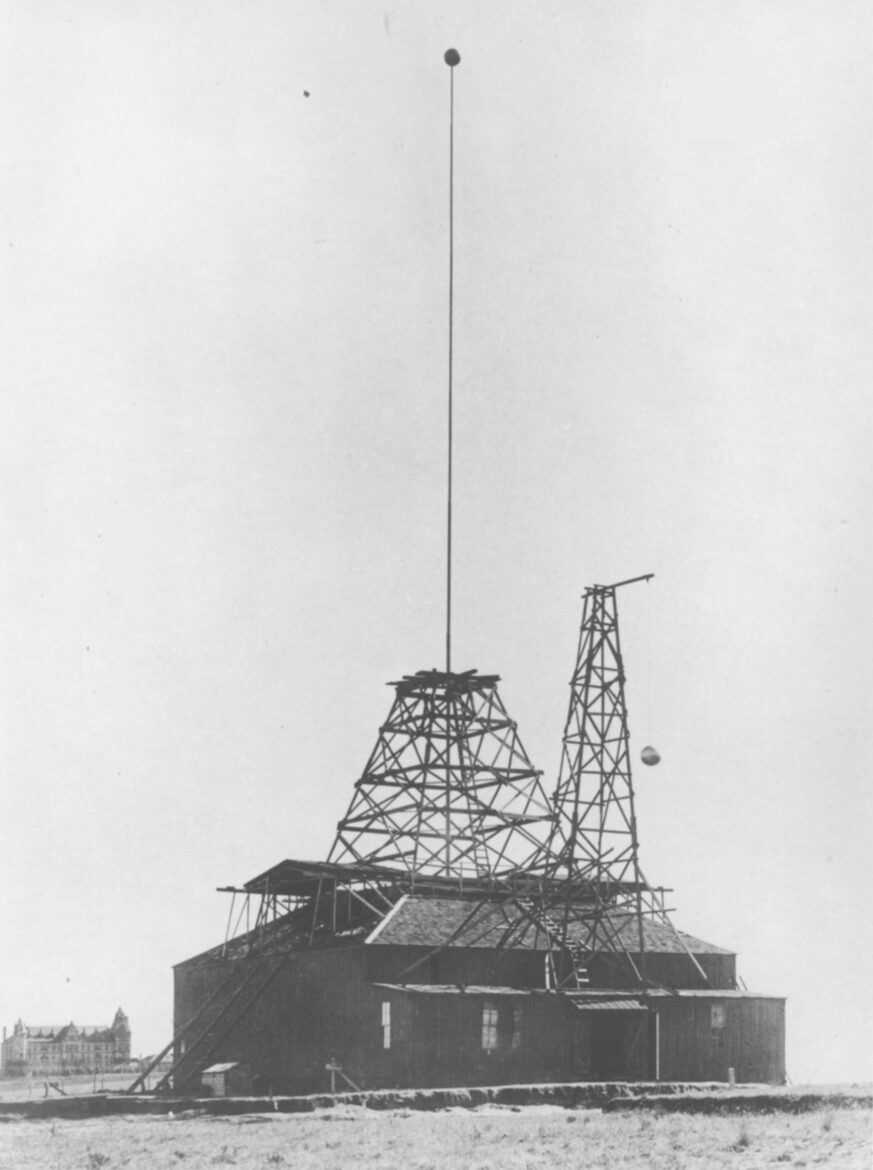
Tesla’s initial plan for cabling across the Atlantic was to eventually erect two terminal stations, one in London and one in New York, with one of his oscillators placed at the top of each tower towers, communicating via giant disks suspended in captive balloons floating 5,000 feet above the earth to flash messages back and forth in an instant through what we would now call the ionosphere.
So his first set of experiments were to be the transmission of very high frequencies up long wires to terminals situated two miles in the sky. Helium-filled balloons more than ten feet long were ordered from a balloon company in Germany, and thousands of feet of wire and cable were shipped from the Houston Street lab. However, Tesla soon realized that existing balloons could not lift the weight of hundreds of feet of wire.
Instead, Tesla designed that telescoping mast O’Neill mentioned, one that could hoist a thirty-inch copper-covered ball to a height of 142 feet. To stabilize the mast, Tesla added a twenty-five-foot tower to the roof of the station. There was also a smaller tower with a hanging metal ball used to measure how capacitance varied with distance from the earth.
Despite the imposing structure he’d built, Tesla’s primary concern was secrecy. There was a single window in the station, but when local boys kept peeking through it, Tesla had it boarded up. There was also a fence built around the whole station, with signs reading KEEP OUT. GREAT DANGER. and a quote from Dante’s Inferno added by an assistant: Abandon hope, all ye who enter here.
Tesla was joined in Colorado Springs by assistants who came from his New York laboratory: first, Fritz Lowenstein (who went back to New York in the fall of 1899) and who was then replaced by Kolman Czito. Tesla also hired a local teenager, Richard B. Gregg, whose father knew Curtis.
Under Tesla’s direction, Lowenstein and Gregg built an enormous magnifying transmitter. In the station’s main room, they constructed a circular wooden wall about six feet high and 49 feet in diameter. Around the top of this wall, they wound two turns of thick cable in order to create the primary winding of the transmitter. In the center of the room, they built the secondary coil using a hundred turns of finer wire. One end of this secondary coil could be connected to either a spherical terminal inside the laboratory or the copper ball atop the mast while the other end was grounded.
To power the transmitter, Tesla tapped into the AC power that ran the streetcar line that stopped just at the edge of the Knob Hill prairie and converted that incoming current to 20,000 or 40,000 volts as needed.
Perhaps Tesla should have affixed one of those GREAT DANGER KEEP OUT signs to the inside of his experimental station, too. Because there was danger aplenty for those inside the building, as well as outside.
In his 1919 article “Can Radio Ignite Balloons?” Tesla describes the great danger associated with his experiments in Colorado Springs. Admit- ting that “fires of all kinds and explosions can be produced by wireless transmitters,” he recounted causing such a fire whereby he was forced to crawl to safety, lucky not to have burned down his entire lab.
In late June and early July, Tesla began making observations of whether the Earth possessed a natural electrical potential or charge and doing so for the first time free of the electrical interference that was already ubiquitous in New York due to the sea of telegraphy, telephony, lighting, and power lines.
If it turned out that the Earth had no charge, Tesla would have to use his magnifying transmitter to introduce a tremendous amount of power in order to make the Earth vibrate electrically and transmit power over distances.
I’m not going to go into the details of the apparatus Tesla designed to measure the earth’s electrical potential–just think of it as sort of like a seismograph, but instead of measuring and recording earthquakes, it did so for high voltage.
Using this device–a coherer–Telsa found that “[t]he earth was literally, alive with electrical vibrations.”
He noticed that his receivers were more strongly affected by lightning strikes that were part of far-off thunderstorms than they were by lightning from nearby storms.
Once such claim is made by John J O’Neill in his biography of Tesla, Prodigal Genius. I’ve mentioned the issues with this book in the past and won’t rehash them here. Instead, I will let O’Neill’s prose speak for itself and, well, you can make up your own mind as to his reliability:
“The gods of the natural lightning may have become a bit jealous of this individual who was undertaking to steal their thunder, as Prometheus had stolen fire, and sought to punish him by wrecking his fantastic looking structure. It was badly damaged, and narrowly escaped destruction, by a bolt of lightning, not one that made a direct hit but one that struck ten miles away.
The blast hit the laboratory at the exact time, to the split second, that Tesla predicted it would. It was caused by a tidal wave of air coming from a particular type of lightning discharge. Tesla tells the story in an unpublished report.
He stated:
I have had many opportunities for checking this value by observation of explosions and lightning discharges. An ideal case of this kind presented itself at Colorado Springs in July 1899 while I was carrying on tests with my broadcasting power station which was the only wireless plant in existence at that time.
A heavy cloud had gathered over Pikes Peak range and suddenly lightning struck at a point just ten miles away. I timed the flash instantly and upon making a quick computation told my assistants that the tidal wave would arrive in 48.5 seconds. Exactly with the lapse of this time interval a terrific blow struck the building which might have been thrown off the foundation had it not been strongly braced. All the windows on one side and a door were demolished and much damage done in the interior.
Taking into account the energy of the electric discharge and its duration, as well as that of an explosion, I estimated that the concussion was about equivalent to that which might have been produced at that distance by the ignition of twelve tons of dynamite.”
End quote.
Whatever you make of O’Neill’s account, the fact that his instrumentation was more affected by far-off storms was a genuine puzzler for Tesla, since common sense would make you think that closer strikes would be picked up more powerfully by the receiver and not strikes farther away.
Then, one night, as he walked back to the hotel with Lowenstein, it came to him: stationary waves. The more distant lightning strikes could register more powerfully if the lightning bolts set up stationary waves in the earth’s crust.
Okay, but what’s a stationary wave?
When you were a kid, did you ever tie one end of a skipping rope to a fence? Well, if you flicked that rope up and down and sent a wave down the length of the rope to the fence, and then the wave travelled back from the fence to your hand, that’s a kind of simple stationary wave. A true stationary wave that we’re talking about here would happen if, in addition to flicking the rope, you also managed to tune that vibration you’re introducing so that it matched the resonant frequency of the rope itself. Then, the two waves–one going from your hand to the fence, the second from the fence back to your hand–would essentially sync up such that even though you were still flicking the rope up and down the waveform the skipping rope made, it’s peaks and valleys, would look like they were standing still.
Tesla reasoned that the lightning strikes triggered an electromagnetic wave in the earth’s crust that reflected back on itself to create a stationary wave.
Tesla had originally considered the possibility that electromagnetic stationary waves might be set up in the earth as far back as 1893, when preparing for his lecture before the Franklin Institute. At the time, however, he dismissed the idea as impossible. Now, in Colorado, he’d proved himself wrong.
And on 3 July 1899, during a spectacular thunderstorm, Tesla got a chance to confirm his hunch.
A massive, violent thunderstorm broke out in the mountains to the west, passed over Colorado Springs, and then moved quickly east onto the plains. According to Tesla, the storm produced no less than 10-12 thousand lightning strikes inside of two hours. Many of the bolts showed 10 or 20 branches. The flashing was almost continuous and even later in the night when the storm had calmed down 15-20 discharges per minute were still visible.
Using his coherer device connected to the ground, Tesla rigged a telegraph relay to sound at each lightning strike. Though not even adjusted for peak sensitivity, the relay began to tap out its measurements when the storm was still 80-100 miles away, an estimate Tesla based on measuring the intervals between thunderclaps.
Just imagine Tesla and his assistants standing around the experimental station counting: “1-Mississippi-2-Mississippi-3-Mississippi…”
As the storm, tracking west to east, passed overhead, they actually had to adjust the sensitivity of the telegraph relay downward, to make it less sensitive, because it was recording so many lightning strikes they worried the springs would break and destroy the machine.
Tesla also rigged up a second instrument to measure the lightning, based on a design used by Russian physicist Alexander Popov in 1895. Tesla attached an electric doorbell connected to the Earth and to an elevated terminal in the station so that the bell rang in response to each lightning discharge.
Imagine the cacophony in the experimental station, between the peals of thunder, a telegraph relay hammering away like a pair of those windup chattering teeth, and an electric doorbell ringing nonstop.
To Popov’s machine, Tesla added a visual element: a small spark gap that arced whenever lightning stuck. To get a sense of the strength of the current passing between the ground and the terminal, Tesla held his hands across the gap to feel the shock that came with each lightning stroke because…of course he did.
“But [a]s the storm receded,” Tesla later recorded, “the most interesting and valuable observation was made.”
As the storm moved away east, Tesla re-tuned his coherer “to be more sensitive and to respond readily to every discharge which was seen or heard.”
Tesla then goes on:
“It [responded] for a while, when it stopped. It was thought that the lightning was now too far and it may have been about 50 miles away. All of a sudden the instrument began again to play, continuously increasing in strength, although the storm was moving away rapidly. After some time the indications again ceased but half an hour later the instrument began to record again. When it once more ceased the adjustment was rendered more delicate, in fact very considerably so, still the instrument failed to respond, but half an hour or so it again began to play and now the spring was tightened on the relay very much and still it indicated the discharges. By this time the storm had moved away far out of sight. By readjusting the instrument and setting it again so as to be very sensitive, after some time it again began to play periodically. The storm was now at a distance of greater than 200 miles at least. Later in the evening repeatedly the instrument played and ceased to play in intervals of nearly half an hour although most of the horizon was clear by that time.”
From this, Tesla concluded that he was observing stationary electromagnetic waves. He reasoned that the lightning strikes set off an electromagnetic wave in the earth’s crust that then reflected back on itself every 30mins to create the stationary wave. Tesla was not certain where the waves were reflected.
“It would be difficult to believe that they were reflected from the opposite point of the Earth’s surface, though it may be possible,” he observed. “But I rather think that they are reflected from the point of the cloud where the conducting path began; in this case, the point where the lightning struck the ground would be a nodal point.”
Since this nodal point would change as the storm continued to move while Tesla’s receiver stayed in one place, Tesla reasoned that the receiver would respond during those intervals in which a peak of the stationary wave passed through the ground underneath the receiver.
And later experimental results by, of all things, the U.S. Navy, suggest that Tesla had, in fact, detected stationary waves produced by lightning storms. The Navy’s findings confirmed that Tesla’s observations were based on actual physical phenomena.
By using extremely low-frequency waves (ELF), the U.S. Navy discovered that it is possible to set up stationary electromagnetic waves, not necessarily in the earth’s crust but between the ionosphere and the earth’s surface in what is called the Schumann cavity. They also found that stationary waves can penetrate deep into the ocean, which is how from the 1980s through 2004, the US Navy maintained radio contact with its nuclear submarines. To transmit the ELF signals, the Navy used an underground antenna twenty-eight miles long.
An ELF signal is considered anything under 30Hz…and unfortunately, these frequencies are also the ones that were later discovered to screw up the behaviour of whales, leading to collisions with boats and ships and with whales becoming disoriented and beaching themselves. So the US Navy brought in regulations about when and where such frequencies could be used for communication. I think the jury is still out on the success of those rules.
In any case, Tesla regarded the discovery of stationary electromagnetic waves to be of immense importance.
“It was on the 3rd of July [1899]-the date I shall never forget-” Tesla later wrote, “when I obtained the First decisive experimental evidence of a truth of overwhelming importance for the advancement of humanity.”
Never one to be subtle, was he?
In his notebook for that day, Tesla wrote: “It is now certain that they can be produced with an oscillator,” and then added in brackets, [This is of immense importance.]34
Tesla also wrote to George Scherff, who was holding down the fort back in New York. “We have just about finished all [the] details,” Tesla told him. “[M]y work is really to begin in earnest right now.”
For Tesla, this discovery meant that the Earth was dynamically, electrically charged, not the vast, calm reservoir of energy he’d previously believed it to be.
In the reservoir model, electromagnetic waves–such as those produced by lightning–would behave much in the same way as waves created by a stone dropped in a body of water: strong where the rock hit the water, and then dissipating in concentric circles. Power wouldn’t travel very far in that case.
But the existence of stationary waves suggested to Tesla that, instead, the Earth behaved like a “conductor of limited dimensions,” and that much in the same way stationary waves could be set up by lightning, Tesla now believed he could produce low-frequency waves using his oscillator.
For Tesla, this discovery meant his system would have far greater reach than the upstart Marconi’s little apparatus. Marconi might have sent messages across the English Channel, but Tesla was convinced he could send them around the world, and power, too.
“Not only was it practicable to send telegraphic messages to any distance without wires,” Tesla later wrote, “but also to impress upon the entire globe the faint modulations of the human voice, [and] far more still, to transmit power, in unlimited amounts, to any terrestrial distance and almost without loss.”
I’m struck here by the parallels Tesla must have seen between his worldwide system and Marconi’s limited wireless telegraph and the advantages that Tesla’s AC system had in sending power greater distances than Edison’s DC system. Did Tesla expect a second “War of the Currents” to break out over wireless? If he did, based on how the first one had played out and what he now believed the possibilities for his world wireless system to be, he must surely have thought he’d be victorious in this war, too.
Tesla spent the next few months tracking lightning storms to determine how far his transmitter should reach.
“This I did,” he explained,
“by comparison with lightning discharges which occurred almost every day and which permitted me to determine the effect of my transmitter and to ascertain experimentally the energy which it was capable of transmitting, as compared with that energy which was transmitted from a certain great distance by a lightning discharge. These I could follow up to distances of many hundreds of miles, and I could at any time tell precisely how much of a fraction of a watt I would obtain with my transmitter in a circuit situated at any point of the globe. The energy ascertained by measurement agreed exactly with that determined by calculation.”
Tesla assumed that if a storm could transmit so much power over such-and-such a distance, there should be no problem in using his transmitter to send power over the same distance.
“With these stupendous possibilities in sight,” wrote Tesla, “I attacked vigorously the development of my magnifying transmitter, now, however, not so much with the original intention of producing one of great power, as with the object of learning how to construct the best one.”
But before he could do that, his instruments detected another interesting set of signals.
And those signals…will have to wait until next time.
Because while in Colorado, Tesla was at his peak as a creative experimenter. But it was his overconfidence in the ideal system that he had built in his imagination that got in the way of him rigorously testing his ideas and collecting the hard evidence he would need to prove his system worked.
Convinced beforehand of the correctness of his ideal system, Tesla pounced on the first hints of success–which turned out to be illusions–rather than confront the actual problems and challenges that come from taking an idea from the imagination to the real world.
So next time, we’ll learn about the signals Tesla thought he was receiving and we’ll hear how one of the most famous photos of Tesla turns out to have been one of history’s first deep fakes.

